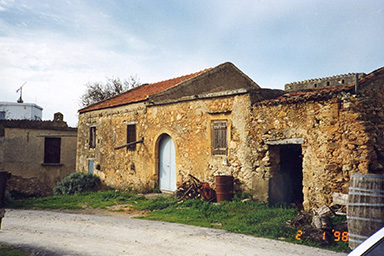The Mill - History
The Old Olive Mill was originally constructed during the latter part of the Venetian occupation of Crete (1204 - 1669), and is now a protected (or listed) building, and restored over a two year period between 1999 and 2001 under the auspices of the Greek Ministry of Culture.
The Venetians constructed 11 centres in the foothills of the White Mountains, of which The Mill at Harvata formed one. Each centre comprised (1) a 'Palazzeto', seasonally occupied by the Venetian Nobleman responsible for the Hania area, together with his officers and soldiers, and was a local centre of administration and tax collection; (2) a 'factory' (or Fabrica) for the production of wine, olive oil, cereal and/or wool; and (3) various adjoining store rooms, and accommodation for the agricultural workers and their families.
The Mill was extended during the Ottoman/Turkish occupation (1669 to 1898), and was used exclusively for olive oil production between c.1850 and 1941. Between 1941 and 1945 The Mill was used as a 'store' by the occupying German forces.
Both the original stone mill, and one of the three original olive presses, have been renovated, and form features of this beautifully restored building.
Whilst the The Mill has been fully restored, the other surrounding buildings remain in need of renovation.

